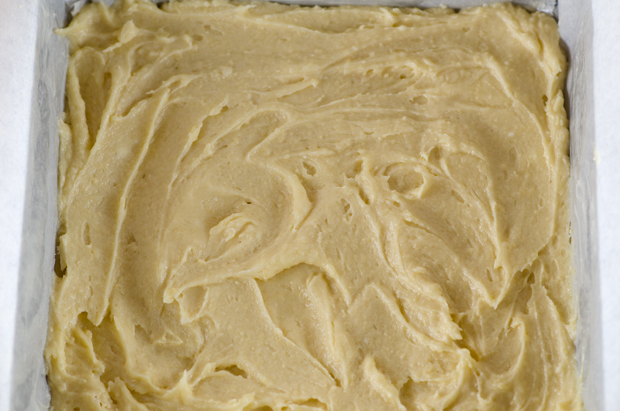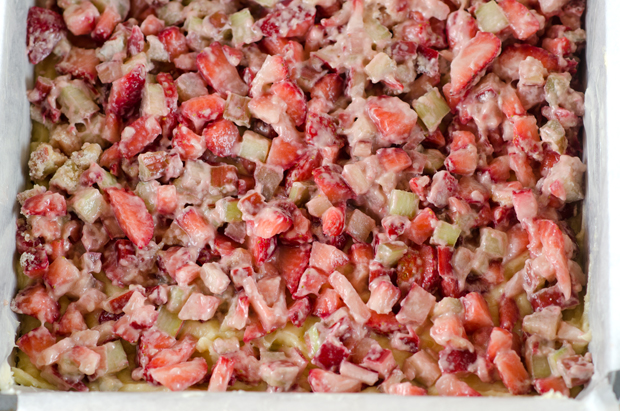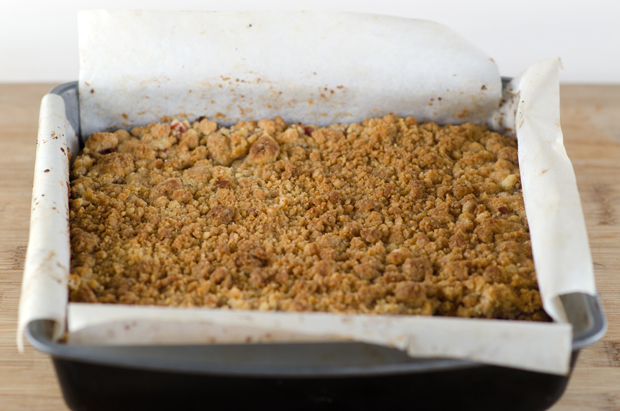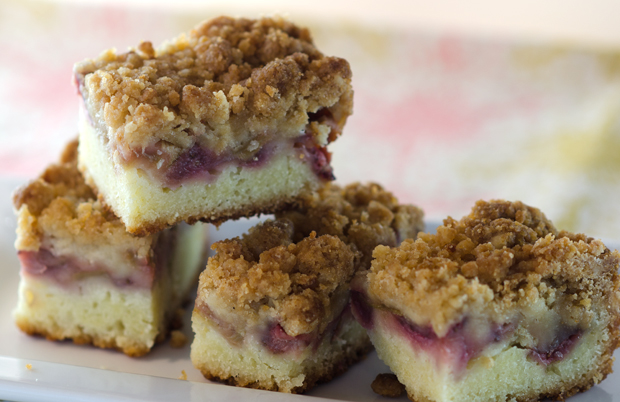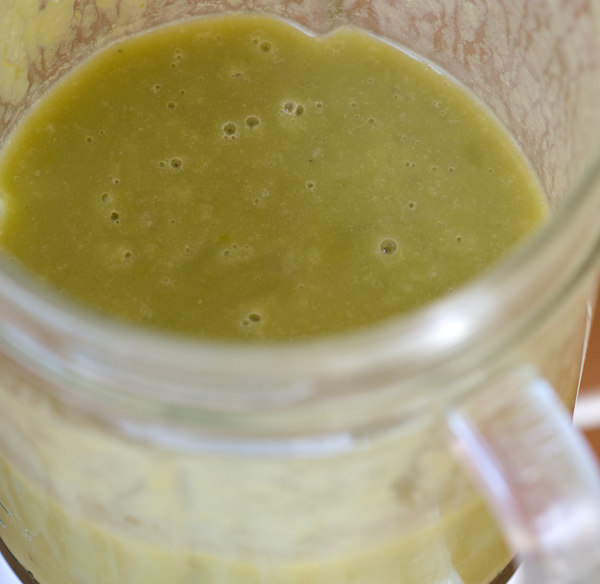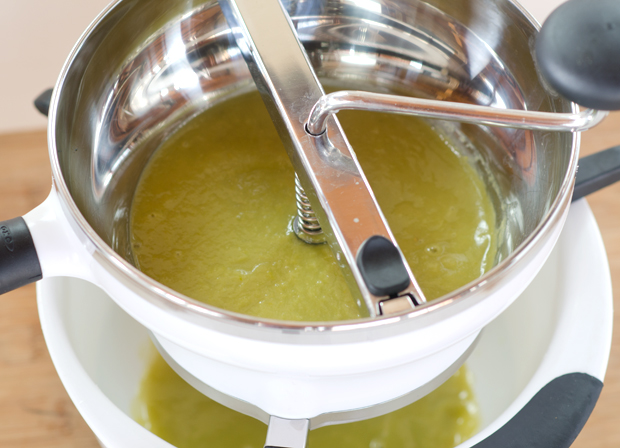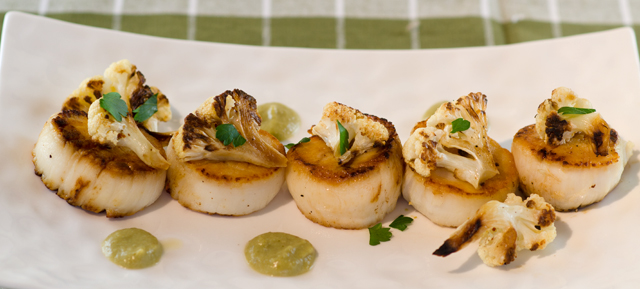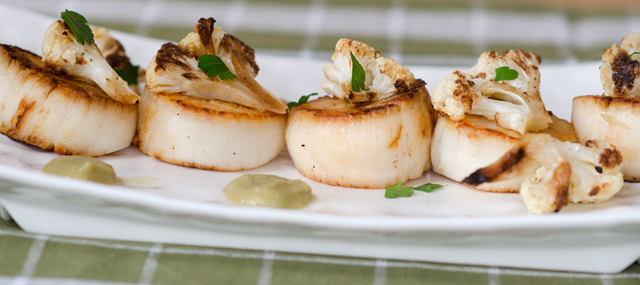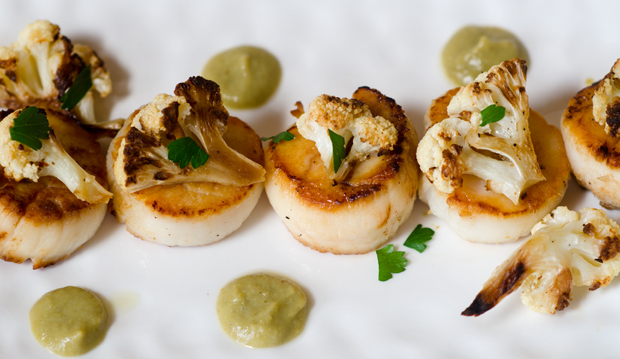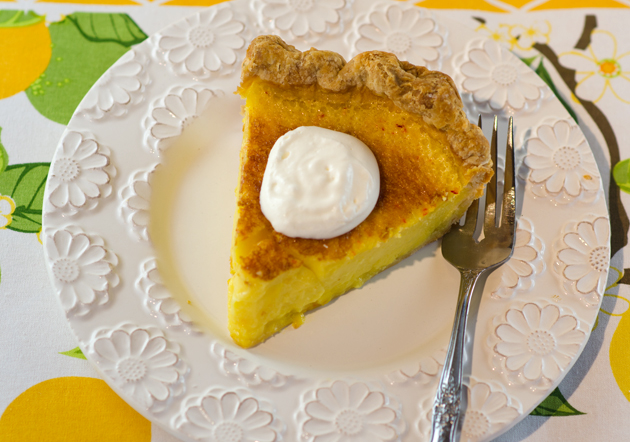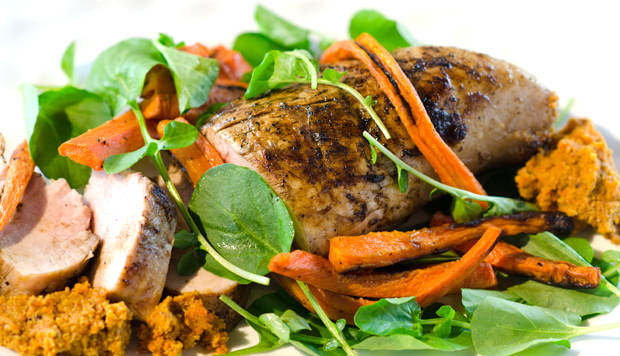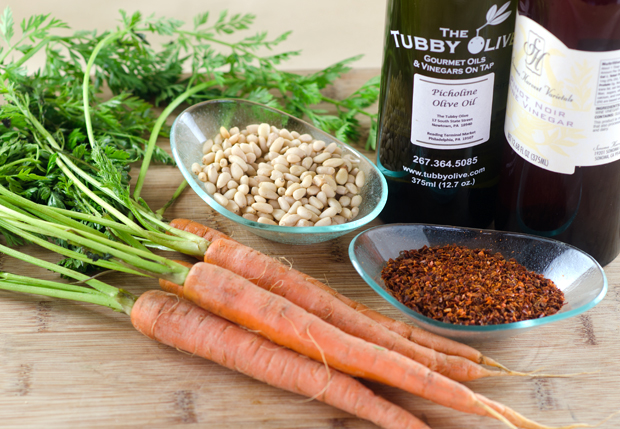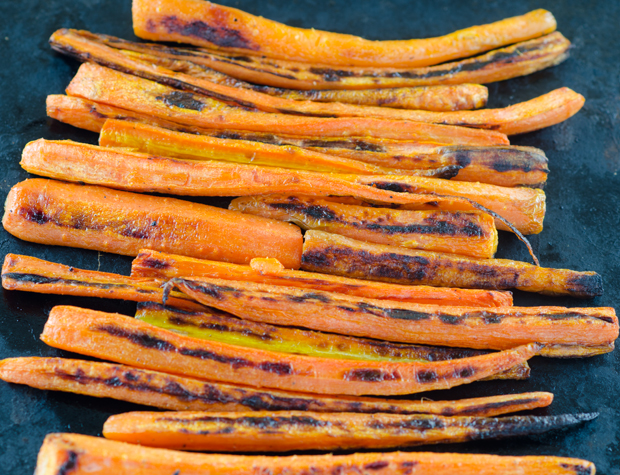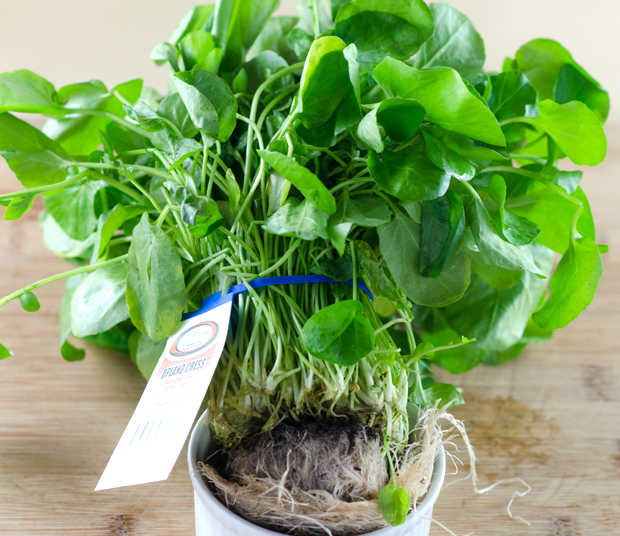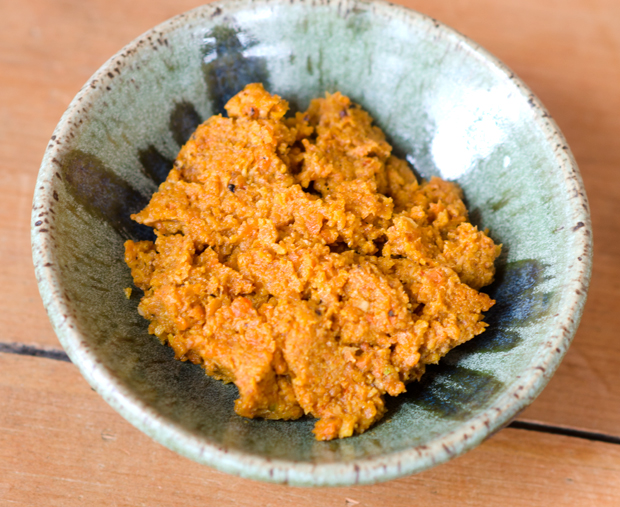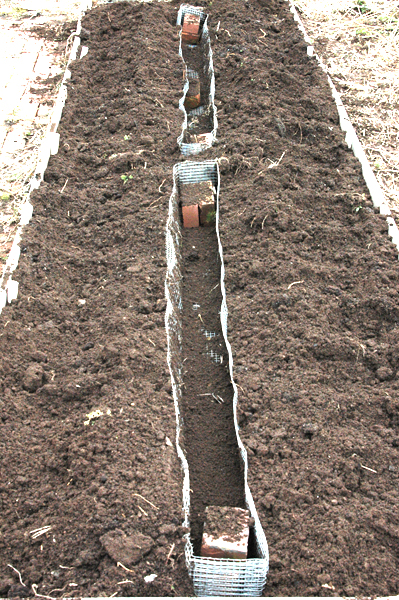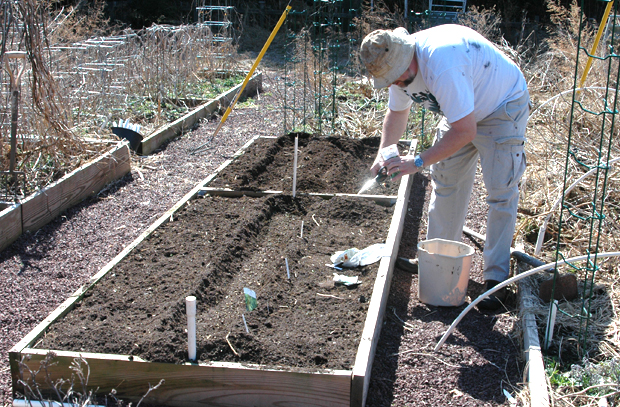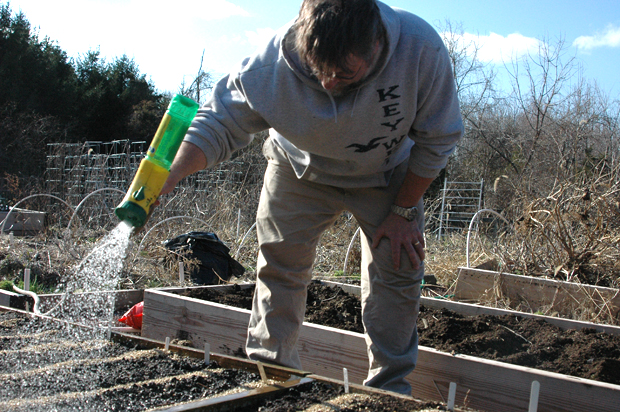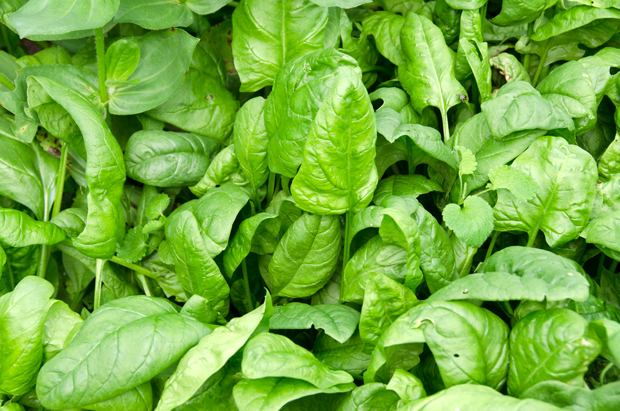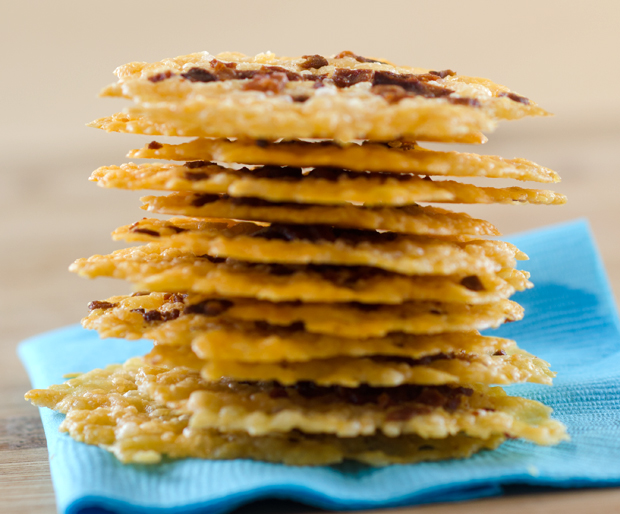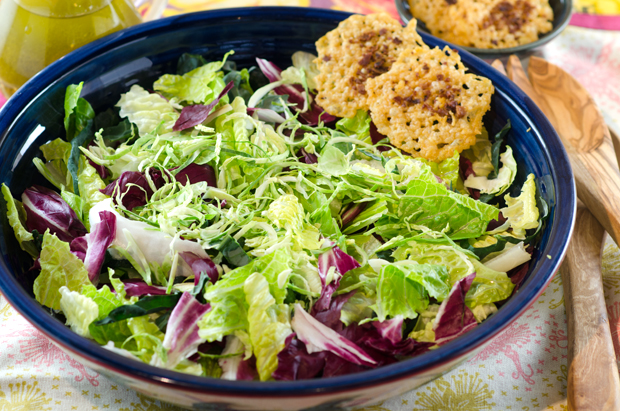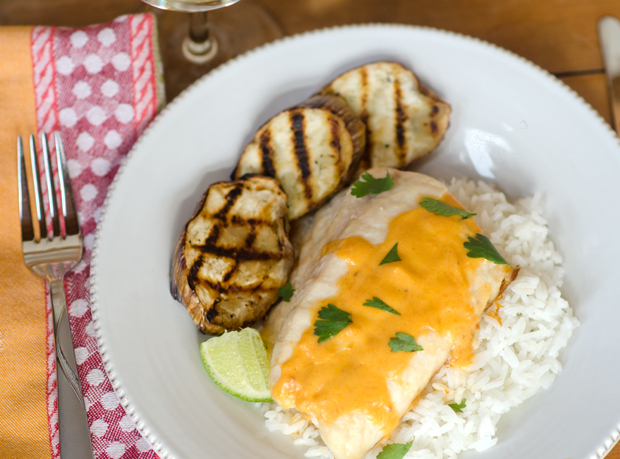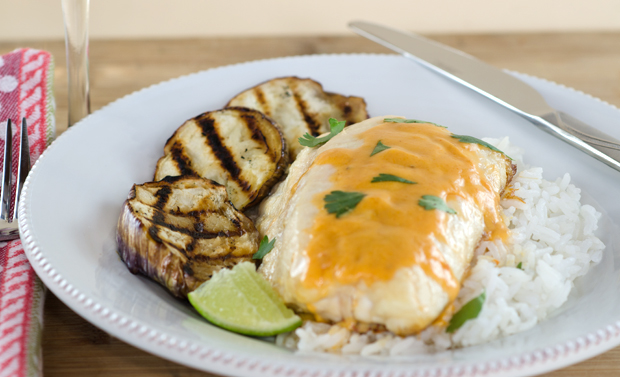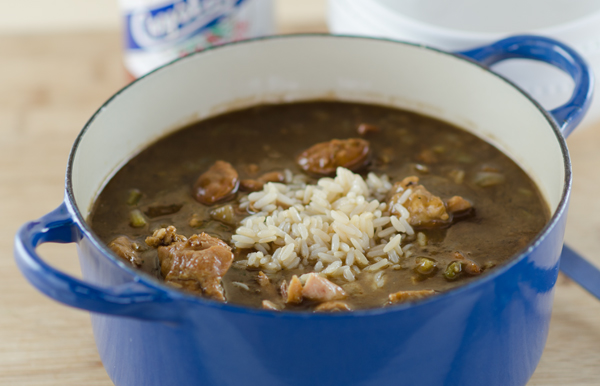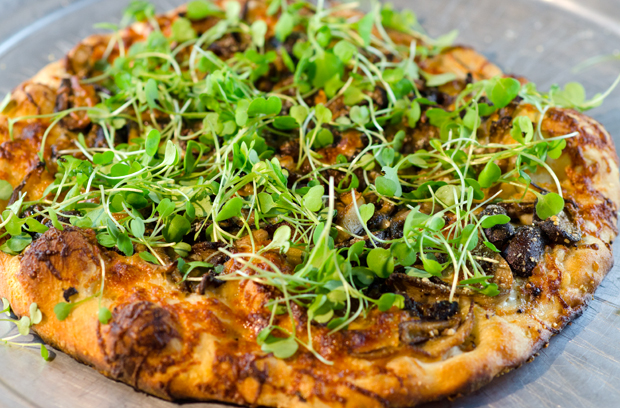Some of Kathy’s friends were asked to bring a dessert for the lunch reception after her memorial service. Wanting to do something special in remembrance of her, I recalled she mentioned liking rhubarb so I knew it had to be part of my dessert contribution. The list of ingredients I have cooked with could rival a Chopped competition but I had never used rhubarb before. I thought I would be best paired with another springtime favorite, strawberries. Since this lunch was informal, the dessert would need to be eaten out of hand so a bar cookie seemed to be the best choice.
For inspiration I turned to the doyenne of desserts, Martha Stewart. The rhubarb crumb bar on her website looked good and in the end notes she said that strawberries could be substituted for half of the rhubarb. Knowing her dessert recipes were dependable, that was good enough for me.
The first hurdle I encountered was finding a market that carried rhubarb. You would think that one of the harbingers of spring in the north would be in abundance but finding rhubarb was quite a challenge. I will chalk that up to an exceptionally cold and snowy winter. After several phone calls I located the one farm market that carried it. Manuevering through the crowds of Good Friday food shoppers, there it was, next to the corn on the cob (still haven’t figured out the logic of that).
I have passed by rhubarb before in markets with casual disinterest, so this was the first time I gave notice to it. To me it just looked like an overgrown stalk of celery or a ruby chard without the leaves. Not that impressive looking I’d say. I learned that rhubarb leaves contain oxalic acid which is poisonous in large amounts. That’s why you will never see the leaves attached in the store. Whoever figured out that the stalk wasn’t poisonous must have been very brave or very hungry!
Rhubarb, is also known as “pie plant” and is a perennial vegetable. Rhubarb shows up most often in sweet dishes like cake, cobblers and crisps but also can show a more savory side in chutneys, salads and even curry. Look for firm, bright red or red-green stalks that can be as long as two feet. It can be wrapped in plastic and stored in the refrigerator for 3-5 days.
The flavor of rhubarb is quite tart and needs to be balanced with a great deal of sweetness.These easy to make bars combine a cake base with a tangy sweet filling of berries and rhubarb and are topped with streusel. Cool the bars completely, an overnight stay in the refrigerator is best, before cutting. Serve as is or dusted with confectioners sugar or “fancied up” with a dollop of sweetened whipped cream.
Strawberry Rhubarb Crumb Bars
Adapted from Martha Stewart Website
Makes 16 or more if you cut them smaller
Ingredients for the Streusel
- 1/2c melted unsalted butter, you will need additional room temperature butter for the pan
- 3/4c packed light brown sugar
- 1/4t kosher salt
- 1 1/4c all purpose flour plus more for the pan
Ingredients for the Bars
- 1/2lb rhubarb, cut into 1/2″ dice
- 1/2lb strawberries, hulled and sliced 1/4″ thick
- 1 1/2T light brown sugar
- 1 1/3c all purpose flour
- 1t baking powder
- 1/2t kosher salt
- 3/4c unsalted butter at room temperature
- 1 1/4c confectioners sugar
- 2 large eggs, beaten lightly
- 1t vanilla extract
Directions for the bars
- Preheat oven to 350ºF. Line a 9″ square baking pan with parchment paper, leaving a 2″ overhang on two sides. A little butter on the edge of the pan will help keep the parchment flush with the pan. Butter and flour the parchment and pan, tapping out excess flour.
- Make the streusel. Whisk together butter, brown sugar and salt. Add flour and mix together with a fork or your fingers. Refrigerate until ready to use.
- Make the cake. In a medium bowl, combine rhubarb, strawberries, brown sugar and 1/3c flour. Sift or whisk together remaining flour, baking powder and salt, set aside.
- Beat the butter and confectioners sugar with a mixer until light and fluffy. Slowly add eggs and vanilla extract. Stir in flour mix until just incorporated.
- Spread batter in prepared pan, top with the strawberry rhubarb mix, then top with streusel.
- Bake 50-55 minutes or until golden and a toothpick comes out clean. Let the bars cool in the pan, then remove from the pan using the parchment tabs.
- Slice bars to preferred size and serve.




